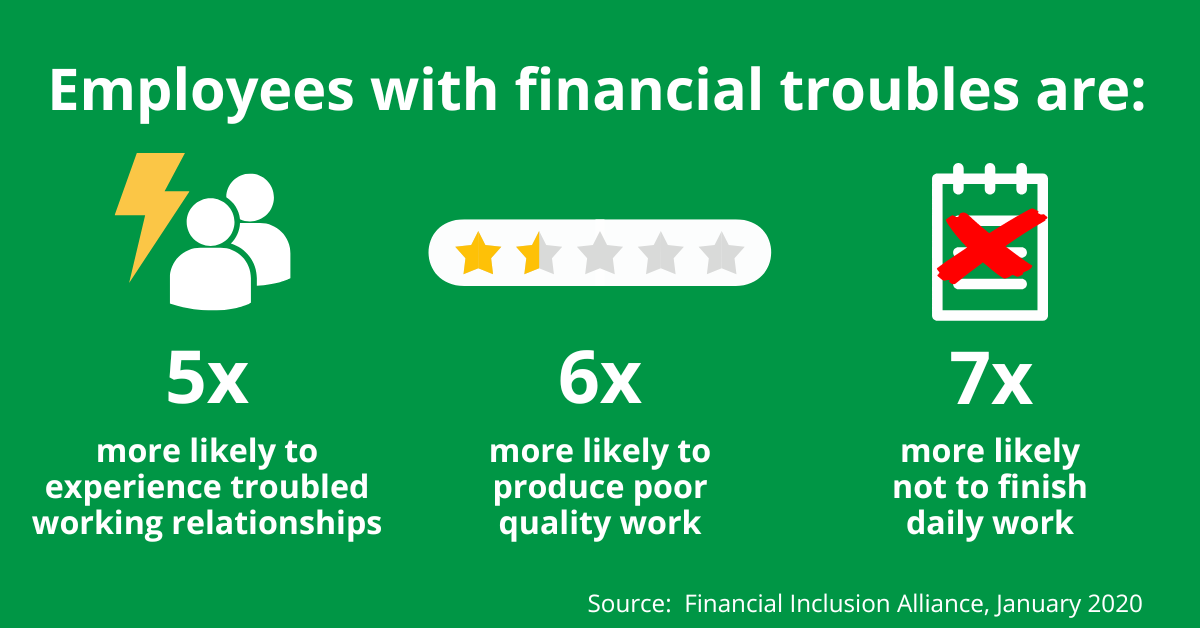
With inflation and the cost of living rising at a rate of knots, more and more of us are being affected adversely by the impact that this is having on our daily lives. The cost of living is increasing, but the majority of salaries are not increasing at the same rate. Even with a 5% salary increase that may have been given back in May and looked generous at the time, will not look so generous now when the rate of inflation is more than double this figure.
With very few companies able to afford to give a 10%+ salary hike, an increasing number of employees will be financially squeezed to a point that may result in major life changes, stresses and ill health. So how has it got so bad and what can we, as employers, do to help our employees?
An overview of this economic storm
Steve Herbert, a firm favourite with the members of The Surrey & Sussex HR Forum, took us on a succinct, slightly harrowing, but realistic journey through some of the economic influences that have brought us to the point we are at now…..and to look at where we may be heading in the next one to two years (it wasn’t a pretty picture that he painted, but it is one that we all need to be aware of, particularly those of us who are responsible for the wellbeing of our staff).
As emphasised, employers need to ensure we can offer the best support to all our employees to help them ride this economic storm as best as possible, for all our sakes.


When did this crisis really begin?
We are being told that the main cause of this current inflation crisis is largely down to the Ukraine and Russian war, however, it is highly evident that prices started rising way before then.
The day after the referendum, six years ago, the pound sunk in value and has broadly stayed there ever since. With the pound being weak and Brexit making the importing of goods so much harder, consumers started to experience higher prices, because as a nation, we are big importers of many household essentials, including food (additionally, fuel prices increased across the globe and, with it being sold in dollars, meant that the weak pound resulted in us taking a bigger hit).
Then, if we think back to the many lockdowns of Covid where our spending was largely curbed, the minute we were ‘let out’ to spend money, we did – and we spent it fast. This led to demand outweighing supply on many things and therefore, prices of goods rose even more, and the continuing spiral has just kept going as there have been other global factors in play.
What other factors have contributed to inflation?
Many other global issues and decisions will be having a direct effect on our own supply and demand. For example, China. China is still trying to reach a 0% Covid status, which is proving to be impossible, but they are still trying by shutting down entire regions of the country, thus stopping the production of so many things that we as a nation rely upon. So yet again, this creates a shortage of supply, which in turn means the price increases and yet again it is another inflationary factor.
The rising price of fuel – an energy crisis is an everything crisis
With Putin in charge of turning the gas pipes on and off, we know that the price of gas will fluctuate for months/years to come and even with price caps in place, this will be a huge problem for all of us. Looking back on the previous cap, many people were in fuel poverty. Even before the October increases, anyone living in a single-salary household who was on minimum wage, or living wage was more than likely already in fuel poverty (which is when the cost of fuel is more than 10% of the household income). However, looking at the prices now and through April, there will be many more affected including those who are on good salaries who thus far have not been hugely affected.
Fluctuating energy prices are a huge part of the whole inflation problem. In April 2023 the cap will go for some of us, but at the time of writing this article, we don’t know who.
Retailers are no longer able to absorb the cost
Previously, rising costs have been absorbed by retail chains who have wanted to keep us shopping with them over the last decade of austerity. However, with the unprecedented rise in fuel costs, the supply chain is now broken, and the prices are having to be absorbed by the consumer.
As quoted by Ed Conway, Sky News: “An energy crisis is an everything crisis”. When the price of energy goes up, so does everything else, because everything either needs energy to make it, energy to move it and more often than not, energy to store it.
The ill-fated Mini-Budget
Where giving money to the rich when so many people are having to choose between heating or eating, will look to most as complete insanity and had a knock-on effect with investors and the stability of our markets. However, with the conservatives now admitting that it was a mistake and with Jeremy Hunt effectively trying to save the UK from spiralling debt, we hope that (although individuals may not like the implications) that the changes they will make will begin to steady the markets.
The increase in the cost of borrowing
Many still argue that interest rates were so much higher 30 years ago, so why are we moaning about interest rates now?
The answer is that the amount we have to borrow has increased vastly (predominantly due to the increase in house prices and the size of the mortgages needed) so therefore the amount on which we are paying interest is much bigger. In the 1990s, interest rates briefly hit 15%, but the properties being bought were much cheaper. We now owe much more than we did in 1990/2000/2010 because low-interest rates during the last decade allowed more people to take out bigger mortgages, which drove house prices up because demand outstripped supply.
So, now a huge percentage of the population have large mortgages which are now subject to a rise in interest rates. The increasing mortgage burden is a serious issue, for example, if a 4% interest rate is reached, it means that 22%-23% of an average household income will go on the mortgage – that is the highest percentage since 2008. If the interest rate increases to 7%, it will increase to 30% of an average household income, which is a serious place to be and will affect a very large proportion of homeowners.
Salaries flat lining
With inflation sitting at 10% (in October 2022), for most, our real earnings (the earnings above inflation) have not increased since the financial crisis in 2008; they have effectively flat-lined and that is why there are so many strikes taking place, from manual jobs to barristers, everyone is feeling the increasing squeeze. However, a shortage of workers in specific sectors creates even more of a tightening in supply and services which are problems. Right now, we are caught in a cycle that is difficult to come out of.
Inflation and disinflation
Hopefully, when the war ends, a difference will be seen – which is at the moment is realistically predicted to be next year (2023). But, when we hit the end of this inflation, what happens next?
The mainstream media have largely been doing us a disservice as the advice they have been giving on inflation is not entirely accurate. They have been indicating that prices will come down, once we have hit the peak of inflation, but this is not how it works. Described by Steve as a mountain descent, it can take the same amount of time to come down from the peak as it did to go up – and this is called disinflation. It is predicted that this period of inflated prices could be with us for at least another 2 years.
Why is managing disinflation so important?
Of course, policymakers would like the period of disinflation to be more rapid still, with one prediction suggesting it may only take 15 months to reach the 2% Bank of England inflation target. Yet the more rapid the descent the more likely that policy corrections may result in the UK overshooting its 2% target and ending up in a period of deflation.
Deflation – where prices are actively reducing – sounds rather attractive from our current vantage point of rapidly increasing prices. Yet deflation is equally damaging to economies, with consumers deferring purchases on the assumption that the price will drop at a later date. It follows that the descent from the current high level of inflation needs to be managed carefully to avoid such unintended circumstances.
How can we as employers and HR professionals help our employees?
Taking into account all the factors we have mentioned, particularly with the cost of borrowing and the hike in mortgage payments, the toll being taken on the physical and mental wellbeing of your employees could already be taking place. As employers, we need to take this seriously and do everything we can to help.
We must remember that it is unlikely that any of your employees are going to want to put their hands in the air and say they have a problem, so it is down to managers and HR to find a way to communicate and reach their employees to see how best they can support them.

Effective communication from HR and managers
Ensuring that there is a good line of communication that offers support to employees is vital. Be that from line managers or HR, reaching out and explaining what you can offer as a company, both on a practical and emotional front, will really help those employees who are feeling anxious, stressed or concerned about the pressures that this current crisis is having on them.
We all know that stress has a big effect on mental and physical wellbeing, which could lead to long-term sickness and absence. So, as a company, try to be ahead of the curve and think of things that your employees will need to stay fit, healthy, stable and as secure as possible during this time of turbulence.
What benefits may really help your employees?
As mentioned by Steve, employers often have a range of existing employee benefits that can provide some help, with Employee Assistance Plans (EAPs), discount schemes, and salary sacrifice offerings being particularly helpful in these challenging financial times.
In particular, he highlighted that employers should try and support their workers by improving their financial wellbeing. Simple tips and lessons can help employees manage their finances far better and will further strengthen the value of other benefit offerings. Discover challenges and responses that employers should consider at this time outlined by Steve.
In addition to tangible benefits, there are other ways to encourage money-saving and employee wellbeing schemes and practices:
- car-sharing
- group activities (these don’t have to be costly – they can be a group walk at lunchtime for those in the office – who can be joined remotely by those working at home)
- mentoring
- buddy schemes
There are lots of options and these need to be tailored to the business, but they can be low-cost and just need to be communicated.
Communication is key
Regardless of the employer’s benefits offering, as mentioned, the key to support is communication. Communicate regularly and signpost employees to the benefits on offer to ensure maximum usage and impact. So often, employees are not fully aware of how a benefits scheme may actually help them, so simple, clear communication will really help.
In addition, support your staff by listening to them. Not only is this vital for a good working relationship, but it will ensure your staff feel valued, which will help with retention and the attraction of new staff. There is still a skills shortage out there and news travels fast.
There is still a candidate shortage
As an employer or an HR professional, you will be all too aware that there is still a candidate shortage in the market. So, do look after your employees and keep them close. Don’t be fooled that all this bad news means there are lots of people out there who will want to work for you.
Over the past several months, the battle for talent reached unprecedented levels and businesses were spending vast amounts of money on the attraction and recruitment of new staff. The cost of using job boards, media, etc. and the securing of candidates by often offering inflated salaries, has meant that businesses have been spending more to find the right people. So why risk losing them now?
Make sure you are offering what people want, which for many, still includes flexibility. The hybrid-working genie is well and truly out of the bottle and on top of other benefits you can offer, this is still one of the key motivators for someone to join a company.
However, the cost of working at home with the hike in fuel prices and food may be forcing some people back to their offices, which just goes to show that you really need to listen to the needs of your employees (and prospective employees) to keep the working environment right.
How do I know if our employee benefits are right?
As an expert and regular commentator on this subject, Steve Herbert, Wellbeing and Benefits Director, Partners&, is more than happy to advise and review your current benefits scheme. As he mentioned during the seminar, frequently employers are unaware of some of the extra benefits quite often hidden within schemes that could add greatly to the wellbeing of their employees.
Small tweaks to your benefits packages, coupled with solid communication could make all the difference.
How the Recruitment Consultancy can help during uncertain times
Having ridden many economic storms over the past 25 years, the team at The Recruitment Consultancy are more than aware the recruitment strategies of many businesses will change and adapt to the current market. Uncertainty can often come with an increasing demand for temporary or interim support being required, especially when heading towards winter as absence, due to illness, can result in remaining staff being overstretched.
For help with your recruitment strategy, you can count on The Recruitment Consultancy to deliver. We provide businesses in and around Surrey and Sussex with permanent, temporary and contract staffing solutions. Our values have stood the test of time, despite the changes in the job market and the roles we are recruiting for.
Get in touch or learn more about our employer solutions here.
